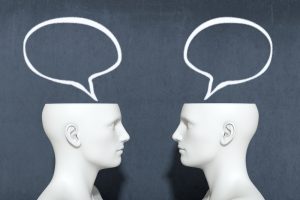Grief is an inherent part of the human experience, a complex emotional response that affects individuals in various ways, and when a partner faces profound loss, the support they receive can significantly influence their healing journey in meaningful and profound ways. In the context of aiding a grieving partner, it is crucial to understand the complexities of their emotional landscape, which often encompasses feelings of loneliness, despair, and identity disruption that can feel overwhelming. Many individuals grappling with grief may struggle to articulate their emotions or even understand the depth of their pain, which underscores the importance of empathetic support. As one study emphasizes, the use of emerging technologies, such as chatbots, has shown promise in providing emotional support to mourners, functioning as an available listener or even simulating the deceased to offer comfort ((Xygkou A et al., p. 1-15)). This innovative approach can be particularly beneficial in helping individuals navigate the stages of grief, as it provides a non-judgmental space for their feelings while offering companionship during times of vulnerability and isolation. Furthermore, as the climate continues to change and intensify, individuals are increasingly confronted with eco-anxiety and ecological grief that can complicate their emotional well-being, highlighting the necessity for proactive coping mechanisms that encompass emotional engagement and self-care practices ((Pihkala P, p. 16628-16628)). Thus, recognizing and responding to these multifaceted dimensions of grief—both personal and environmental—is critical in effectively supporting a grieving partner, as a strong support system can foster resilience and healing in the midst of profound sorrow.
A. Definition of grief and its impact on relationships
Loss can stir up a heavy mix of emotions—sadness, anger, even confusion—that hit you unexpectedly. Generally speaking, grief isn’t just a simple reaction; it’s a deep, layered feeling that often finds its way into how people connect with one another. Often, those struggling with this emotional weight end up feeling isolated or even wrongly perceived, which can slowly pull loved ones apart. Things can get even more tangled when the loss comes from really traumatic events, like a stillbirth or suicide, leaving families overwhelmed and support networks stretched thin (Friedlander et al.). Survivors sometimes find that their sense of self shifts, and they reach out for real, heartfelt connections with others, showing just how important a bit of empathetic understanding can be during such trying moments (Torres et al.). In the end, getting to grips with how multifaceted grief really is proves essential if we’re to offer the kind of support grieving people truly need.
B. Importance of supporting a grieving partner
Supporting a grieving partner is paramount to fostering both individual and relational healing during a profoundly challenging time. The journey through grief can often feel isolating, and when one partner experiences a significant loss, the emotional weight can lead to substantial strain within the relationship. This reality emphasizes the necessity of mutual understanding, empathy, and open communication, as these elements can create a safe space for both partners to express their feelings without fear of judgment or misunderstanding. Engaging in processes that regulate emotions and establish a cohesive grief rhythm can be beneficial not only for individual healing but also for strengthening the partnership as a whole. This is particularly evident in studies involving bereaved couples who navigated the aftermath of child-loss, where their ability to share their pain and support each other’s emotional journeys often led to stronger relational bonds and a healthier coping mechanism (Barboza et al.). Additionally, it is crucial to recognize the unique experience of the caregiver in these scenarios, as their needs may differ, thus illuminating the necessity for targeted support. This is especially pertinent in instances of prolonged emotional turmoil, such as that found in dementia caregiving situations. Such understanding empowers partners to navigate complex emotions together, fostering resilience amid grief while promoting a more profound connection and collective healing (Sahagian et al.). Therefore, it becomes clear that actively supporting one another through grief is not just beneficial; it is essential for the overall health of the relationship, allowing both partners to emerge from their shared experience with a deeper understanding and a renewed appreciation for one another.
C. Overview of strategies to help a grieving partner
Helping a partner through grief isn’t a simple matter—it involves juggling a bunch of emotional needs in a space that feels both safe and genuine. Sometimes you just have to be there, letting them talk openly about their feelings and recall memories of the one they lost; these heartfelt moments can slowly ease the weight of sorrow and build a deeper bond. Often, taking part in little gestures—like putting together a memory book or joining in a quiet memorial ritual—offers unexpected comfort and a path toward healing. It’s also important to pay attention to the way their moods shift, since grief tends to show up in odd and unpredictable ways, mirroring research that generally suggests loss impacts our well-being more than we might expect ((Bishop et al.)). Using a more organized approach, like the strengths-based 3-5-7 Model™, can sometimes help blend these experiences into a kind of resilience and strengthen the supportive ties that matter in such moments ((Alford et al.)).
II. Understanding Grief
Grief hits everyone in its own unpredictable way – a mix of feelings that can change based on your past, your close relationships, and the situation that led to the loss. It isn’t just about deep sadness; in many cases, there’s also confusion and even guilt. For example, caregivers tending to someone with dementia sometimes end up carrying a heavy burden of guilt when they have to move a loved one into long-term care facilities (Sahagian et al.). Young people caught up in the child welfare system face grief fueled by trauma and broken bonds, which really shows why strategies that build trust and help mend emotions are so necessary (Alford et al.). When partners get what these twists and turns really involve, they can help each other through a maze of grief, eventually deepening their connection during these tough moments.
A. Different stages of grief and their significance
Grief comes in layers, and knowing its different parts really matters when you’re trying to help someone who’s hurting. Generally, people cycle through phases like denial, anger, bargaining, depression, and finally acceptance; each one tells its own story. At first, denial can work like a temporary shock-absorber, letting someone ease into a harsh reality without getting overwhelmed. Soon enough, raw emotions like anger and deep sadness start showing up, complicating things not just for the person in pain but also for the people trying to lend support. Dealing with these feelings head-on is almost always key to healing—even if, in most cases, folks don’t have the right tools (Reynolds et al.). It’s interesting how grief doesn’t follow a strict blueprint, often shifting depending on the person and their family ties. For instance, research into how parents and siblings deal with stillbirth (Avelin et al.) shows just how varied these reactions can be. In most cases, noticing these differences and offering thoughtful, understanding help remains crucial to truly support everyone involved.
B. Common emotional and physical responses to grief
Grief isn’t just a feeling—it shows up in our bodies too, often messing with how we handle loss. Sometimes sorrow, anger, guilt, and even anxiety appear in unpredictable doses, sometimes intense and other times barely there. There are moments when the shift from caring for someone to suddenly facing their absence stirs up a confusing mix of emotions, including a dash of regret about decisions like opting for professional care (Sahagian et al.); this really reminds us that these times are delicate. On the physical side, you might notice signs like constant fatigue, a dropped appetite, or sleep that’s all over the place, which only makes everything trickier. In many cases, young widowed parents report feeling cut off from others, leaning on community support where a genuinely empathetic ear from friends and family can make a huge difference (DeBruin et al.). All in all, recognizing these layered responses is key for anyone trying to stand by a loved one through such tough, muddled moments.
C. The role of individual differences in the grieving process
Grief isn’t something that hits everyone the same way. Even among couples, each person deals with loss in their own, unpredictable style. You might notice that factors like gender, personal quirks, and past encounters with sadness tend to shape how emotions surface and how one copes during rough times. For example, one qualitative study on gender differences in mourning generally found that one partner’s way of handling grief can really diverge from the other’s (Welte et al.). That same research even suggests that mixing outside pressures with what happens at home can give us a better sense of how loss marks a marriage (Welte et al.). In most cases, accepting that people feel grief differently is key for partners trying to support each other; it builds a space where, even with all our messy, imperfect feelings, both can work through their sorrow together and maybe even strengthen their bond during such a challenging phase of life.
III. Effective Communication

Navigating grief within a partnership necessitates an intentional focus on effective communication, as it serves as the bedrock for emotional support and understanding. In the throes of loss, silence can easily predominate, leading to feelings of isolation and misunderstanding; thus, actively fostering open dialogue becomes crucial for both partners. Couples benefit significantly from discussing their feelings, memories, and coping strategies, which promotes a shared grief experience that not only helps in processing their emotions but also strengthens their bond in the face of adversity. Research indicates that couples who communicate openly about their grief engage in processes of regulating self and other, which ultimately helps in forming a grief rhythm that facilitates healing and recovery (Barboza et al.). Furthermore, approaches like the 3-5-7 Model™ emphasize the importance of creating safe spaces for emotional expression, allowing partners to process their grief together in ways that honor their individual experiences while simultaneously building a deeper connection with one another (Alford et al.). By prioritizing effective communication strategies, such as active listening and empathy, couples can create an environment that nurtures mutual support, thus enhancing psychological well-being as they navigate their shared journey through grief. This intentional effort not only bolsters resilience during difficult times but also lays the groundwork for a stronger partnership, one that can face future challenges with greater understanding and compassion. In essence, effective communication serves as a vital tool that empowers couples to walk the path of healing together.
A. Importance of open and honest dialogue
Open and honest dialogue is crucial when supporting a grieving partner, as it fosters an environment of trust and understanding that is essential for emotional healing. Grief is an intensely personal experience that varies significantly from one individual to another; thus, allowing space for open communication enables partners to share their feelings without fear of judgment or stigma. This dialogue not only helps in expressing grief but also facilitates connections that can mitigate feelings of isolation, which many people experience during such challenging times. According to a recent survey, a significant number of Americans express a desire for more conversations about grief, indicating that societal recognition of this need is growing and evolving (N/A). Such discussions can help to break the silence that often surrounds loss, offering individuals the opportunity to navigate their complex emotions in a supportive atmosphere. Moreover, scholars like George Kohlrieser emphasize the indispensable role of dialogue in conflict resolution and emotional understanding, proposing that constructive communication can strengthen bonds and provide a secure foundation for navigating challenges together in times of sorrow (Dahal et al.). This is especially important because when partners engage in meaningful conversations, they create a shared understanding of their experiences and allow for mutual support. Hence, fostering direct and empathetic conversation becomes integral to the healing process for both partners involved, enabling them to confront their grief collaboratively and emerge more resilient as they face the future together. In essence, engaging in open dialogue not only aids in processing grief but also solidifies the relational foundation necessary for enduring love and support amidst adversity.
B. Active listening techniques to support your partner
In the delicate journey of helping a grieving partner, employing active listening techniques stands out as a vital component of effective support. Effective communication involves not only hearing the words being spoken but also profoundly understanding the emotions that lie beneath those words, which in turn fosters a safe space for the bereaved to articulate and express their feelings openly. Techniques such as maintaining steady eye contact, nodding affirmatively to show understanding, and utilizing paraphrasing to reflect back what has been said serve to reassure the grieving individual that their thoughts and emotions are being acknowledged and validated. As highlighted in the literature, professionals with training in grief support emphasize the critical importance of empathy, not only to provide comfort but also to facilitate meaningful connections during this deeply challenging experience of mourning. Programs focusing on developing skills related to grief, such as those offered by Grief to Growth, enhance participants’ abilities to become more effective and compassionate supporters for loved ones navigating the tumultuous waters of loss and sorrow. By actively listening and demonstrating genuine concern, partners can foster resilience and promote personal growth amidst the myriad challenges that accompany grief, ultimately leading to a healthier relational dynamic. This process encourages ongoing communication and understanding, essential elements for both partners as they cope with the complexities of their emotions and the adjustments required in their relationship during such a difficult time (McDevitt et al.), (Mitchell et al.).
C. Encouraging expression of feelings without judgment
Creating an environment that encourages the expression of feelings without judgment is vital in helping a grieving partner navigate their emotional landscape effectively and compassionately. This process is essential, as grieving individuals often grapple with a myriad of feelings—such as sadness, anger, confusion, and even guilt—that can be difficult to articulate and confront. Allowing open communication fosters trust and emotional safety, making it more likely that partners will feel comfortable sharing their experiences and emotions without fear of being misunderstood or dismissed (Barboza et al.). Furthermore, engaging in dialogues that validate their feelings—rather than curtailing or criticizing them—actively promotes emotional processing and healing. It is important to listen attentively and respond with empathy, as this can significantly enhance the individual’s sense of being cared for and understood. As highlighted in the literature, parental choices surrounding grief, especially in challenging contexts such as stillbirth, often hinge on the support and understanding they receive from others (A Lathrop et al.). Thus, maintaining an empathetic stance and actively encouraging emotional disclosure not only deepens the connection between partners but also paves the way for a mutual journey through grief. By cultivating an atmosphere devoid of judgment, partners can navigate the complexity of their emotional experiences together, finding solace in vulnerability and fostering resilience in their relationship. Ultimately, such an environment not only aids the grieving process but also strengthens the bonds of love and trust that are essential in times of emotional turmoil.
IV. Providing Practical Support

Supporting a grieving partner involves more than just emotional empathy; it necessitates providing practical support that addresses their immediate and often overwhelming needs during a challenging time. This support can take various forms, including but not limited to assisting with household tasks, coordinating schedules, or managing logistics related to memorial services and other necessary arrangements. For instance, many grieving individuals may struggle with daily responsibilities such as cooking, cleaning, or managing finances, making practical assistance invaluable during this period of emotional turmoil. As highlighted in the caregiving literature, understanding and responding to the unique experiences of caregivers can illuminate how to best support loved ones through grief, facilitating their adaptation to new roles and responsibilities as they navigate the complexities of loss (Sahagian et al.). Moreover, this assistance can help to mitigate feelings of isolation and helplessness, which often accompany profound loss. By being proactive in offering support for practical needs, a partner can foster an environment of care and security, essential elements that can ultimately aid in the healing process (Mawardi et al.). Additionally, practical help can also serve as a tangible reminder that the grieving individual is not alone in their journey; it reinforces the notion of teamwork in overcoming the burdens of grief and rebuilding a life after loss. Ensuring that these practical needs are met allows the grieving partner to focus on their emotional well-being, paving the way for a gradual and healthier processing of their grief.
A. Assisting with daily tasks and responsibilities
The experience of grief profoundly impacts daily life, often rendering even the simplest tasks overwhelming for those mourning a loss. When a partner is faced with such profound sorrow, assisting with daily responsibilities becomes a vital way to support them, alleviating some of the burdens they face during this extremely challenging time. This assistance might include mundane yet crucial chores such as meal preparation, cleaning, or managing finances—tasks that may feel insurmountable during periods of intense emotional distress. Engaging in these daily duties not only helps lightening the load but also provides emotional comfort, reinforcing the bond between partners. Such acts of service not only demonstrate care and compassion but also foster a sense of stability amidst chaos, allowing the grieving individual to process their emotions without being overwhelmed by practical concerns. Research underscores the importance of these supportive actions, particularly as the transition into widowhood can be a significant source of stress, with 32% of individuals over 65 experiencing the loss of a spouse, a figure that escalates with age (de Vries et al.). In addition, understanding the broader implications of caregiving roles can help partners navigate this difficult journey together, cultivating mutual support and understanding (Sahagian et al.). Moreover, creating routines around these tasks can also provide a semblance of normalcy, encouraging both individuals to cope with the changes in their daily lives while reinforcing their emotional connection amid the upheaval of loss. By working together to tackle these responsibilities, partners can strengthen their relationship and build resilience as they share their grief.
B. Creating a supportive environment at home
In the context of helping a grieving partner, creating a supportive environment at home is essential for their emotional recovery and overall well-being. A nurturing space promotes open communication, allowing both partners to freely express their feelings without the fear of judgment or misunderstanding, which can often exacerbate the pain of loss. Studies such as those highlighting the experiences of young widowed parents reveal that the types of support received play a crucial role in mitigating feelings of isolation and distress during bereavement (DeBruin et al.). This sense of connection and understanding is particularly important, as it provides a foundation upon which both partners can lean. Establishing routines and shared activities can also foster a sense of stability, which is vital for healing; through collaboration on daily tasks or even indulging in simple pleasures together, partners can create new, positive experiences that temporarily distract from grief and reinforce their bond. Furthermore, identifying appropriate professional services and community groups can provide additional layers of support, addressing both emotional and practical needs, ensuring that the grieving partner feels backed by a broader network of care and understanding (DeBruin et al.). By actively cultivating a compassionate and understanding atmosphere within their home, partners can help each other navigate the complexities of grief, ultimately reinforcing their emotional bond during one of life’s most challenging periods and laying the groundwork for a healthier future together. This supportive environment not only aids in the grieving process but also strengthens the relationship, allowing both partners to emerge more resilient.
C. Encouraging professional help when necessary
In navigating the complexities of grief, especially the deep emotional challenges that arise after significant loss, it is vital to recognize when professional help may be necessary for both partners in the grieving process. Encouraging a grieving partner to seek assistance from mental health professionals can lead to healthier coping strategies and provide a supportive framework for their emotional turmoil, which is often overwhelming and difficult to manage alone. According to recent research, young widowed parents have identified several professional services that have been particularly beneficial in aiding their recovery from profound loss. These insights highlight the importance of structured emotional support during such vulnerable times, especially when the sadness can feel insurmountable and isolating (DeBruin et al.). Furthermore, these services not only alleviate feelings of isolation but also foster a sense of community and validation for individuals grappling with the intense emotions associated with their grief (DeBruin et al.). It is essential to remember that seeking help is not a sign of weakness; rather, it is an empowered step towards healing and recovery. By promoting professional intervention when required, partners can ensure that they are not only supporting one another through their individual grief journeys but also effectively addressing their own mental health needs. This proactive approach ultimately enhances the healing journey for both individuals, enabling them to cultivate resilience and fostering an environment where emotional healing can take place in a healthy manner, allowing them to move forward together.
V. Conclusion

In conclusion, helping a grieving partner or grieving spouse requires a profound understanding that the journey of mourning is not only deeply individual but also often complex and nuanced. As partners navigate the myriad intricacies of their shared grief, it becomes crucial to foster an environment rich in open communication and unwavering emotional support. The experience of loss can be further compounded by societal misunderstandings surrounding grief, especially for those coping with unique challenges such as individuals with intellectual and developmental disabilities, who may find that their mourning goes unrecognized or invalidated (Ailey et al.). This societal oversight can intensify their feelings of isolation during an already difficult time. Furthermore, as partners confront feelings of rejection in various aspects of their emotional responses, normalizing these sentiments becomes pivotal to the healing process. This normalization allows them to collectively address their grief in a constructive manner, breaking down barriers that may arise during their mourning journey (Anderson et al.). It is essential to acknowledge that each partner’s process may look different, and embracing these differences can facilitate a richer understanding of one another. Ultimately, by prioritizing empathy, patience, and a shared commitment to healing, partners can reinforce their bond, creating a supportive framework that not only honors the memory of what they have lost but also nurtures and strengthens their present relationship. This journey towards healing can transform their relationship into one that is characterized by resilience, mutual understanding, and a deeper emotional connection, laying a foundation for continued growth and love.
A. Recap of the importance of support during grief
Grief is a tangled mix of feelings that hits hard and changes how people connect with one another. People caught up in loss often find themselves overwhelmed by emotions, making their relationships feel even more complicated. Take, for example, parents who lose a child—they’re not only mourning but also trying to care for their remaining kids, a situation that calls for both heartfelt compassion and everyday, real-world assistance from friends and neighbors (Nolte et al.). Sometimes, a child’s death can pull a couple apart or, oddly enough, draw them closer, which just goes to show that understanding each other really matters when life gets rough (A Dyregrov et al.). In the end, having even a little bit of support around doesn’t just help ease the pain of grief—it can also nurture stronger, more genuine bonds through honest, sometimes messy conversation.
B. Long-term commitment to helping a grieving partner
Helping someone who’s in deep grief isn’t solved with a quick note or simple gesture of sympathy. It means being there for the long haul—grief twists in unexpected ways, and people caught up in it often need both heartfelt support and practical help as time goes on. Research generally shows that using approaches like the 3-5-7 Model™ can give both partners a little push to face their loss and slowly rebuild those important bonds. A steady, empathetic approach builds trust; this lets the grieving partner work through raw emotions while opening up little paths toward healing. In particular, when loss comes from suicide, survivors might, in most cases, end up looking for genuine, meaningful connections (Torres et al.). Basically, sticking with empathy and being willing to adjust as needs change can really help mend the emotional wounds in the long run.
C. Final thoughts on love and resilience in relationships
Love can be the one steady force amid overwhelming grief, much like an anchor tossed in a storm of heartache. When couples face a heavy bereavement, they unexpectedly find themselves in a kind of emotional dance—balancing raw feelings with gentle support for each other (Barboza et al.). Bereaved parents, for example, sometimes learn to match their sorrow, and in doing so, they not only strengthen their connection but also spark individual healing—a quiet reminder that sharing pain can transform us. In most cases, young widowed parents show that help from family, friends, and even a caring community plays a crucial role in softening the blow of loss (DeBruin et al.). Ultimately, these varied experiences reveal love’s surprising ability to shift, adapt, and build a foundation for resilence against even the toughest setbacks.
References:
-
- Barboza, Jessica. “Processes of Couple Co-Regulation in Bereavement: A Longitudinal Study”. DigitalCommons@USU, 2023, https://core.ac.uk/download/591045595.pdf
- Sahagian, Lauren Rochelle. “The dementia family caregiver”. 2017, https://core.ac.uk/download/211331347.pdf
- Alford, Keith A, Denby-Brinson, Ramona, Gomez, Efren, Henry, et al.. “Implementation Science and Fidelity Measurement: A Test of the 3-5-7 Model™”. Digital Scholarship@UNLV, 2017, https://digitalscholarship.unlv.edu/cgi/viewcontent.cgi?article=1036&context=lincy_publications
- Mawardi, Artiawati, Secapramana, Laurentia Verina Halim. “Workplace Counselling in Indonesia”. ‘University of Surabaya’, 2003, https://core.ac.uk/download/11980225.pdf
- McDevitt, Liza, Pippen, CJ, Roebuck, Victoria, Wellman, et al.. “From Grief to Growth: Rebuilding a Life of Flourishing After Suicide Loss”. ScholarlyCommons, 2020, https://core.ac.uk/download/323112548.pdf
- Mitchell, Lenora. “Student Affairs Professionals’ Experiences Supporting Students through a Grief Loss: A Qualitative Study”. Digital Commons @ West Chester University, 2023, https://core.ac.uk/download/567824324.pdf
- Ailey, Sarah, Breakwell, Susan, Murphy, Anna, O\u27Rourke, et al.. “Supporting a Community of Individuals with Intellectual and Developmental Disabilities in Grieving”. e-Publications@Marquette, 2008, https://core.ac.uk/download/326327577.pdf
















